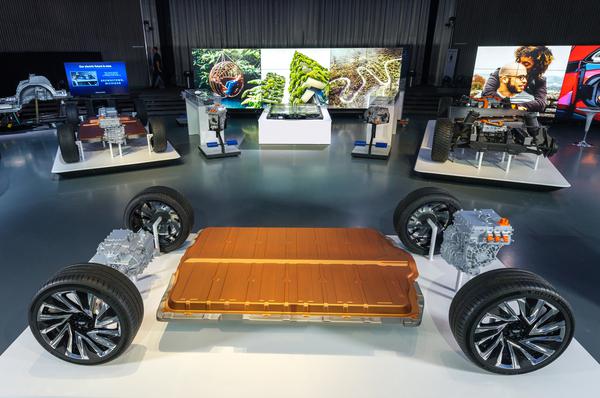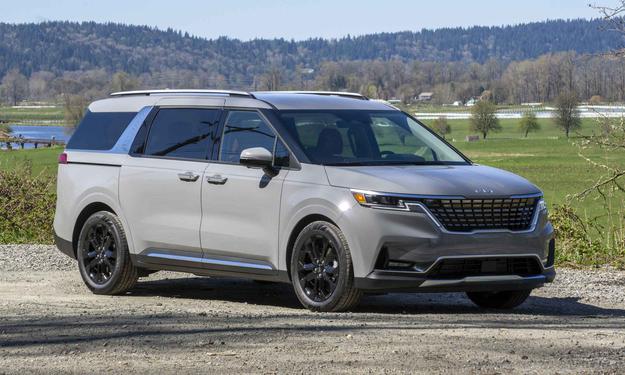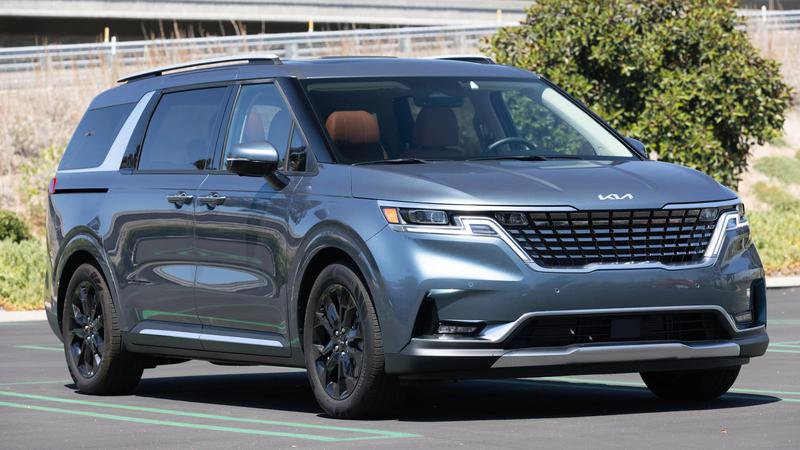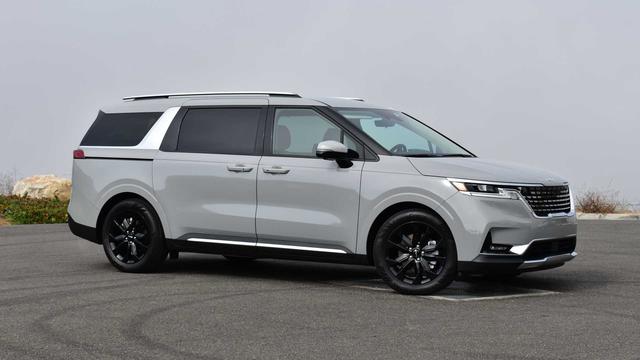Honda may seem to some competitors like the indomitable flawless force of auto industry quality perfection, but it has been caught out in the past.
Anyone remember the unholy alliance between Honda and Isuzu in the early ‘90s? Honda somehow missed the obvious-to-everyone-else SUV craze, had no products to offer, and signed a deal to sell Isuzu Rodeos as Honda Passports and Isuzu Troopers as Acura SLXs. In exchange, Honda gave Isuzu versions of the Odyssey minivan that were rebadged as Isuzu Oasis. Any one of those is worth hundreds of dollars to collectors today.
Likewise, Honda was caught out for one of the earlier waves of the ZEV mandate and wound up repurposing its own Honda Fit with a battery pack and electric motor. That was a series limited to just over 1,000 leases, or almost exactly what was required by CARB to meet the ZEV mandate of that era. At the end of the leases, all the e-Fits were gathered back up and never seen again.
GM Honda
Likewise, from about 2008 to 2019, when Honda hesitated to commit to one form of alternative fuel, it offered the bulbous blob of the Honda Clarity as an electric car, plug-in hybrid electric car, and a pure hydrogen fuel-cell car. They sold like cold cakes.
Now, in the latest development in the soap opera, “As Honda Hesitates,” the company has decided it would be better to share development costs on the latest wave of electric cars and has announced an agreement with General Motors to “codevelop affordable EVs targeting the world’s most popular vehicle segments.”
Honda and GM announced in 2018 they would collaborate on EV battery technology, and in April of 2020 that Honda would make an EV based on GM Ultium mechanicals, to be called the Prologue. That car is to go on sale in the U.S. in 2024, followed by an Acura version. Several other Honda EVs are also being developed for the Chinese market.
Electrifying NewsPorsche Plans Electric 718 and Macan296 GTB Takes Ferrari Toward an Electric FutureGarlits, 90, Still Plugging Away with EV Dragster
This latest announcement suggests a more far-reaching collaboration, but with GM doing most of the heavy lifting on batteries, motors and chassis while Honda designs its own bodies to go on top of Ultium mechanicals. The agreement may be a smart cost-saving plan for both companies, or it might just be the latest example of Honda being unable to commit. It’s not like it doesn’t have resources.

Regardless, we here in North America will see the first fruits of these co-ops starting in 2027. No prices or specs were given, but Honda said to look for “millions of EVs.”
“General Motors and Honda today announced plans to expand the two companies’ relationship to a new chapter by codeveloping a series of affordable electric vehicles based on a new global architecture using next-generation Ultium battery technology,” read the joint release.
The plan is to be selling lots and lots of EVs fairly soon.
“The companies are working together to enable global production of millions of EVs starting in 2027, including compact crossover vehicles, leveraging the two companies’ technology, design, and sourcing strategies,” the joint statement stated. “The companies will also work toward standardizing equipment and processes to achieve world-class quality, higher throughput and greater affordability. The compact crossover segment is the largest in the world, with annual volumes of more than 13 million vehicles.”
And remember, battery technology is far from settled.
Honda History in EVsSony and Honda Partner to Build Electric CarsHere’s Why Honda’s EV Plans Could Be a ChallengeThe Prologue EV SUV Will Kick Off Honda’s EV Era
“GM and Honda also will discuss future EV battery technology collaboration opportunities, to further drive down the cost of electrification, improve performance and drive sustainability for future vehicles,” the two companies said.
“GM is already working to accelerate new technologies like lithium-metal, silicon and solid-state batteries, along with production methods that can quickly be used to improve and update battery cell manufacturing processes. Honda is making progress on its all-solid-state battery technology which the company sees as the core element of future EVs. Honda has established a demonstration line in Japan for all-solid-state batteries and is making further progress toward mass-production.”
GM CEO Mary Barra said the deal is “…a key step to deliver on our commitment to achieve carbon neutrality in our global products and operations by 2040 and eliminate tailpipe emissions from light duty vehicles in the US by 2035.”
General Motors
Honda is looking at the long term as well.
“Honda is committed to reaching our goal of carbon neutrality on a global basis by 2050, which requires driving down the cost of electric vehicles to make EV ownership possible for the greatest number of customers,” said Toshihiro Mibe, Honda president and CEO.
Doug Parks, GM executive vp of global product development, purchasing and supply chain, echoed that statement: “Our plans include a new all-electric product for North America positioned at a price point lower than the upcoming Chevrolet Equinox EV, building on the 2 million units of EV capacity the company plans to install by the end of 2025.”
But left unanswered is why doesn’t Honda, mighty Honda, develop its own batteries? (Apart from the solid-state cells its working on.) Does it still think fuel cells are the future? We will know by about 2040 or so. Check back here then.
This content is created and maintained by a third party, and imported onto this page to help users provide their email addresses. You may be able to find more information about this and similar content at piano.io




